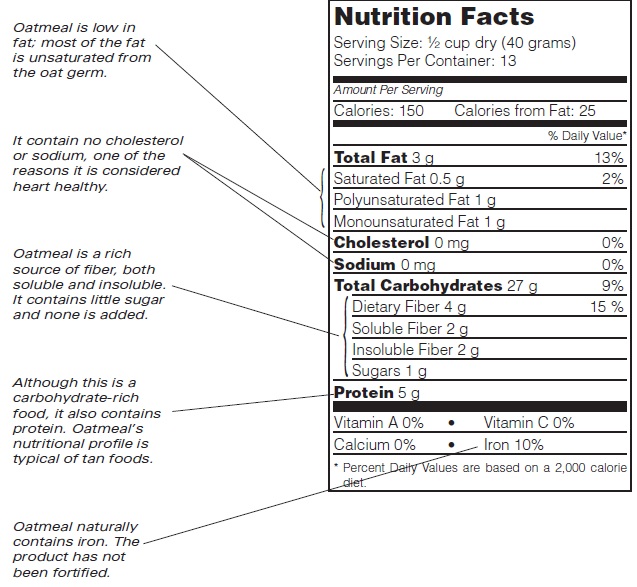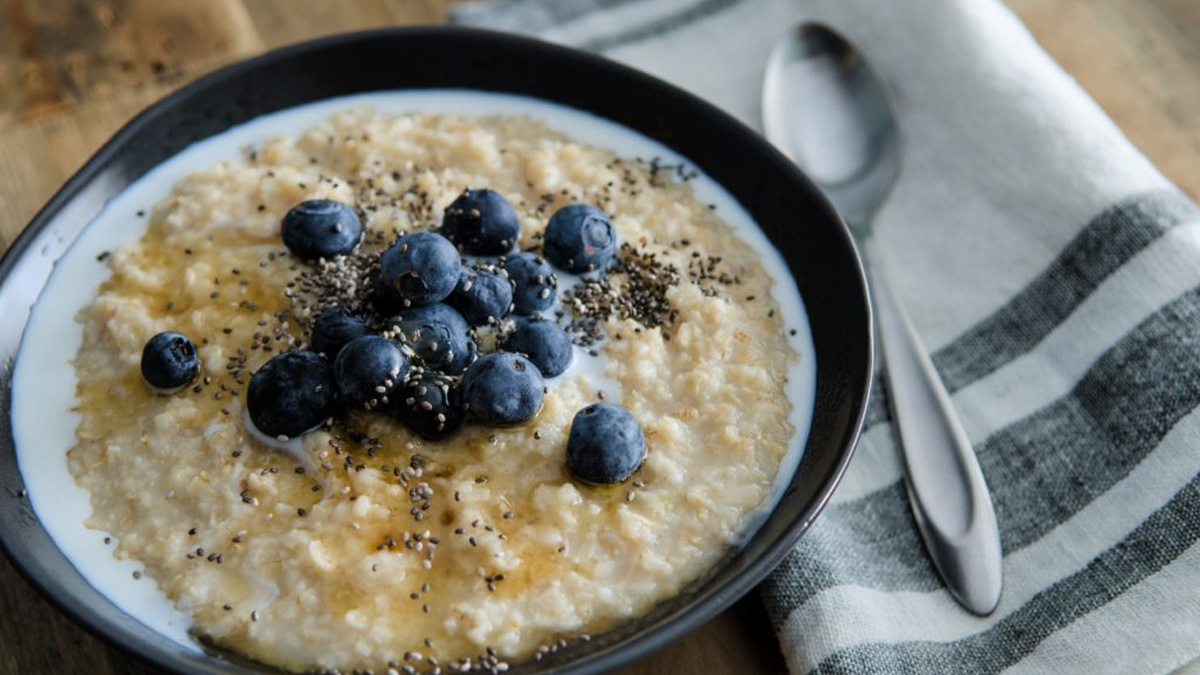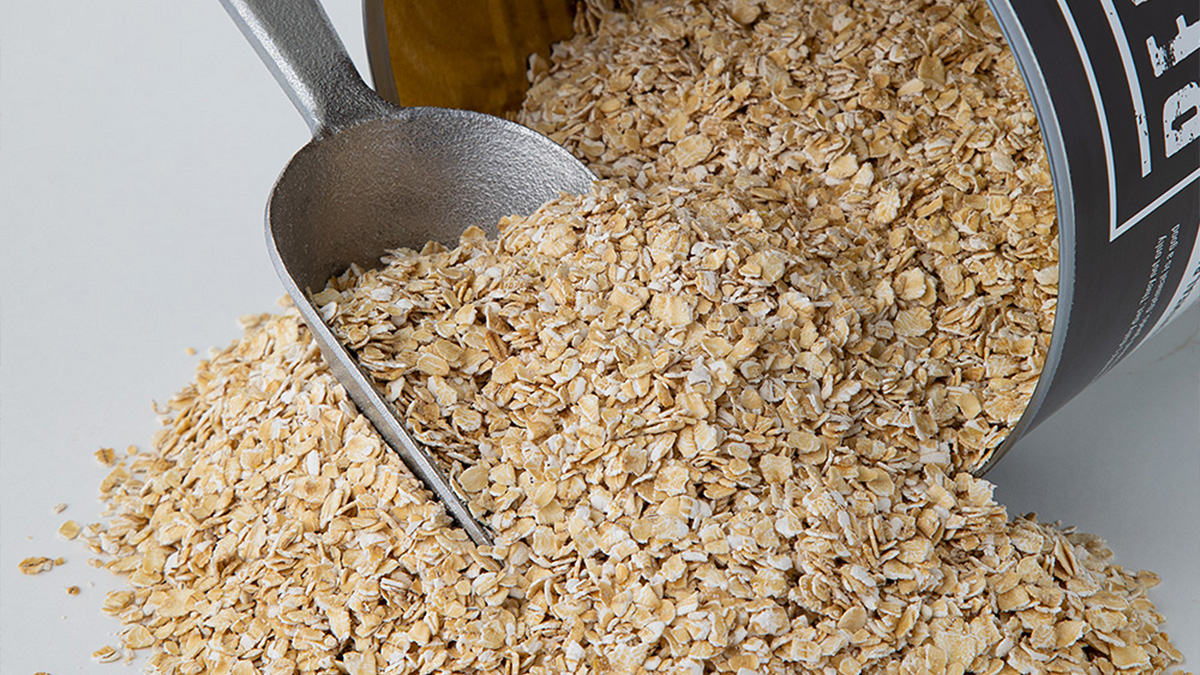on
Oats, formally named Avena sativa, is a type of cereal grain from the Poaceae grass family of plants. Full of nutrients and fiber, oats are one of the most nutritious whole-grain foods that a person can consume.
Oats were brought to Scotland by the Romans in medieval times where the cool, damp climate seemed to suit them well. The Scots quickly became associated with oatcakes and porridge (what we in the US would call oatmeal). They in turn brought oats with them to the New World in 1602 to help them power through their day.

Types of Oats
Oats are available in a variety of forms, based on how they are processed. The following list shows the types of oats in order of least to most processing. Although the nutritional content between steel-cut and instant oats is relatively similar, their effects on blood sugar are not. The least processed oats, like groats or steel-cut, generally take longer to digest so they have a lower glycemic index than rolled or instant oats.
- Oat Groats: The whole oat kernels that have been cleaned, with only the loose, inedible hulls removed. Groats contain the intact germ, endosperm, and bran.
- Oat bran, which contains the most fiber in a groat, is also removed and eaten as a cereal or added to recipes to boost fiber content.
- Steel-Cut or Irish: Oat groats that have been cut into two or three smaller pieces either using a steel blade. The larger the size of the pieces, the longer they will take to cook.
- Scottish Oats: Oat groats that have been stone-ground into a meal, creating a creamy porridge-like texture when cooked.
- Rolled or Old-Fashioned: Oat groats that have been steamed, rolled and flattened into flakes, and then dried to remove moisture so they are shelf-stable.
- Quick or Instant: Oat groats that are steamed for a longer period and rolled into thinner pieces so that they can absorb water easily and cook very quickly. Be aware that many brands of instant oats come sweetened or flavored, so be sure to check the ingredients for no added sugar.
A packet or two of instant oats along with some Datrex bars gives you some lightweight, easy to prepare food options when you are on foot, with the added plus of the packaging being flammable, however, instant oats are not good nutrition for the long term due to their high sugar content.
Nutrition Facts
The following nutrition label is for rolled oats, which is the form of oats most of us are familiar with. That is the type of oats used in baking, and in coating meats for frying.

Minerals — oats are rich in a range of important minerals, vitamins, and antioxidants. Just 100 grams (1 1/2 cups dry) of oats contain:
- 51 percent of the daily recommended intake of thiamine
- 8 percent riboflavin
- 5 percent niacin
- 6 percent vitamin B6
- 14 percent folate
- 13 percent pantothenic acid
- 26 percent iron
- 44 percent magnesium
- 52 percent phosphorus
- 12 percent potassium
- 26 percent zinc
- 31 percent copper
- 246 percent manganese
Because of the type of fiber oats contain, they tend to leave you feeling fuller and they digest slower, which helps to curb spikes in blood sugar which is important for Type II Diabetics.
Cooking with Oats

- Oatmeal: A breakfast favorite, cooked oats pair well with fruits, nuts, and seeds. Follow package directions for exact cooking times. Generally, less-processed oats such as steel-cut take 25-30 minutes to cook, whereas instant oats take 1-2 minutes but lack the nutrition.
If the thought of oatmeal brings to mind a sticky paste, try using steel cut oats that add a more hearty texture. And with rolled oats watch the cooking time as mushiness is the result of overcooking.
Feel free to add the topping of your choice, honey, chia seeds, nuts, fruit – fresh, dehydrated or freeze-dried, or pretty much anything that catches your fancy. - Gruel: Oatmeal gruel is the “poor man’s porridge” as it is a thinned down version of porridge using either extra milk or water. In addition to stretching out food supplies, it is also good to feed someone who is just recovering from a bout of illness especially if nausea and vomiting or cough were involved. It is easy on the stomach and protein helps with healing. Adding a bit of honey to it can help to soothe a sore throat as well.
- Overnight Oats: A quick, easy no-cook solution for a nutrient-dense breakfast or snack. In a medium glass jar, add ½ cup old-fashioned or rolled oats (not instant), ½-1 cup liquid such as dairy milk, soy milk, or nut milk, and ½ cup of any chopped fruit (banana, melon, apple, grapes). Additional optional ingredients include a few tablespoons of Greek yogurt, 1-2 tablespoons of chia/flaxseeds, nuts, or any spices. Tightly screw on the lid and shake the jar vigorously until all ingredients are incorporated well. Refrigerate overnight or for at least four hours. The oats will soften and the mixture will thicken into a pudding-like texture.
- Oat Flour: These are oats that have been ground to a flour-like consistency. Although it may be tempting to substitute oat flour for regular flour in baked recipes, keep in mind that oat flour lacks gluten, a crucial component that adds structure, moisture, and volume to a baked product; without it, cookies would crumble and breads would become dense and lack volume. However, oat flour can add chewiness to cookies and a boost of nutrients to breads. Substitute 25-30% of flour in a recipe with oat flour for best results.
- Oat Risotto: Oats are also delicious in savory dishes. An example is replacing rice in risotto with whole oat groats or steel-cut oats. Typically, the oats are first toasted for a few minutes in hot oil with aromatics like shallots or diced onion. Then stock and/or water are added, 1 cup at a time, stirring well after each addition, until the oats are cooked (about 25 minutes).
Shelf Life & Amount to Store
One #10 can of quick rolled oats contains about 22 – 1/2 cup (dry) servings, which is about 1 cup when cooked. Storing 16 cans of rolled oats will provide one person with one serving of oatmeal each day for breakfast for almost an entire year.
If properly stored one of these cans packed for long-shelf-life can last for up to 30 years. So if you stock up you always know you have a hearty, healthy breakfast available to get your day started right.
Get access to premium content and more!





